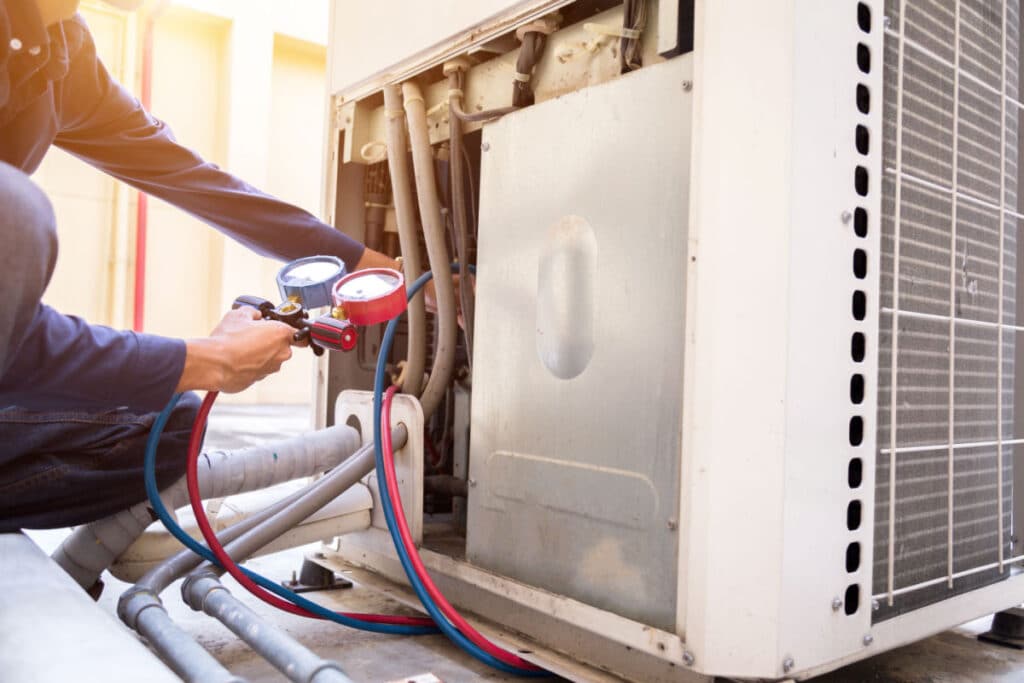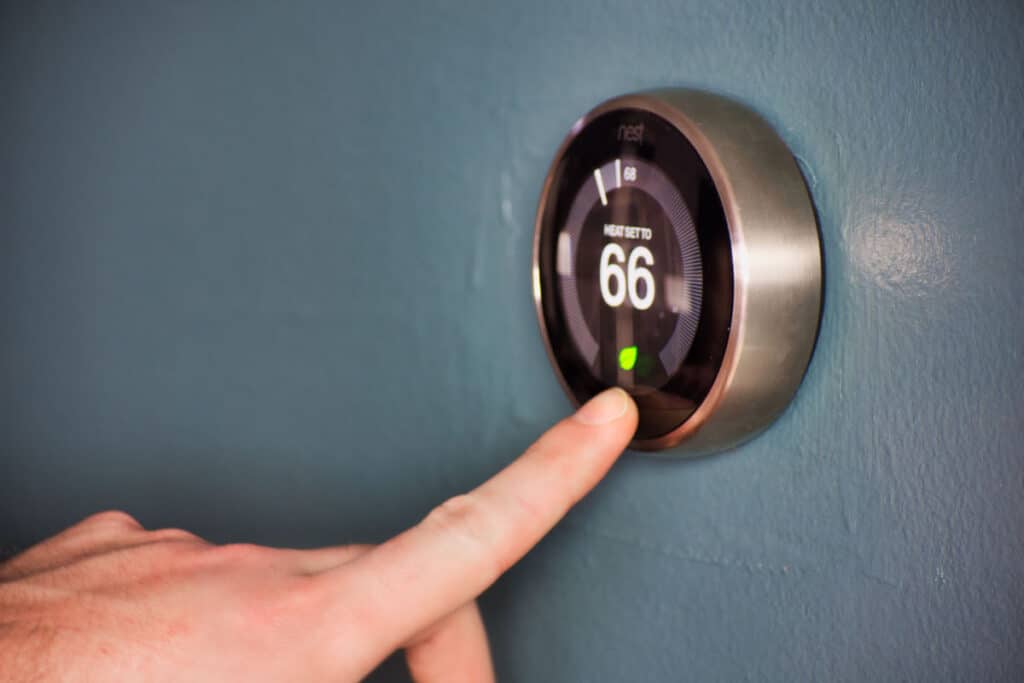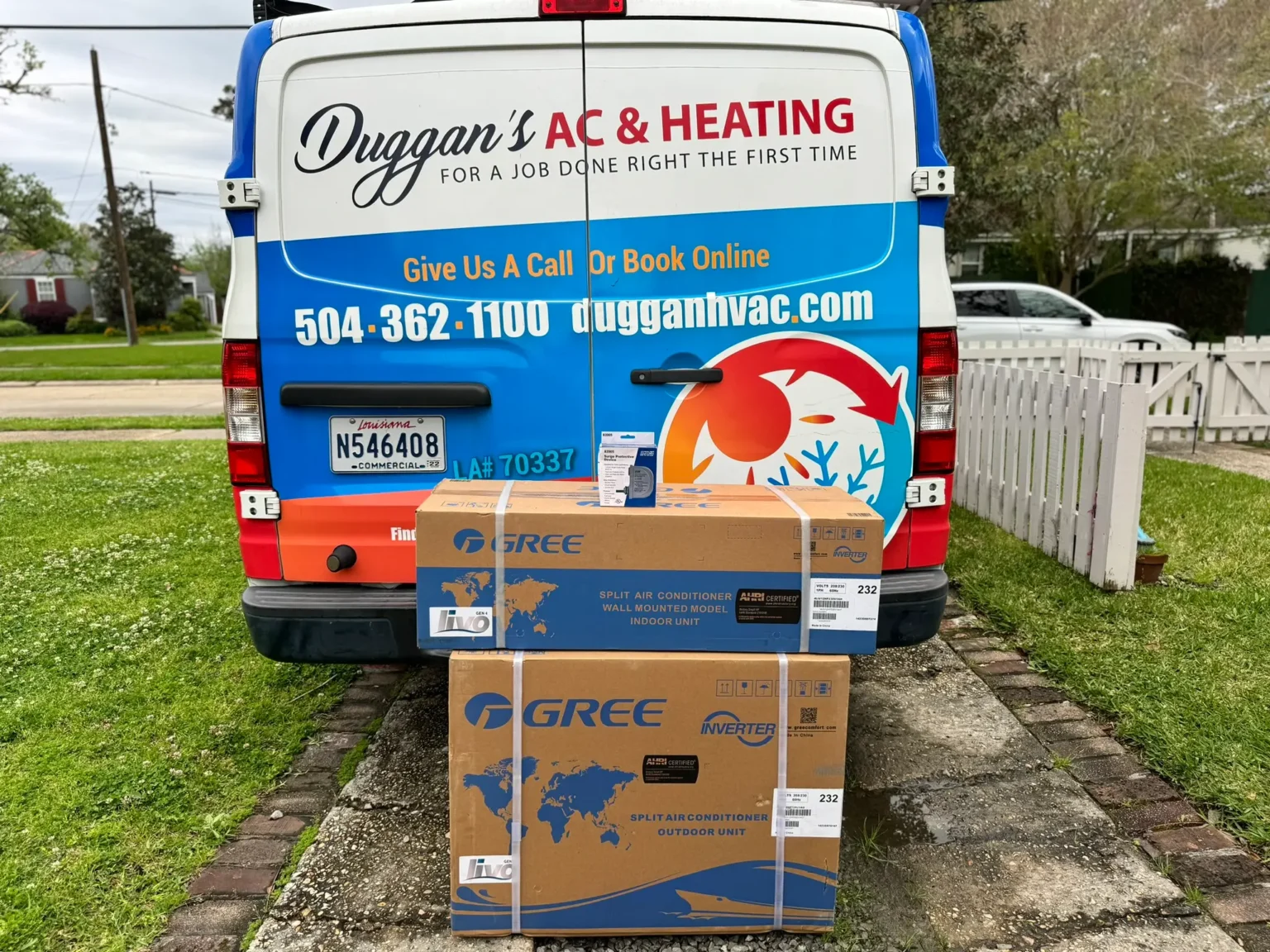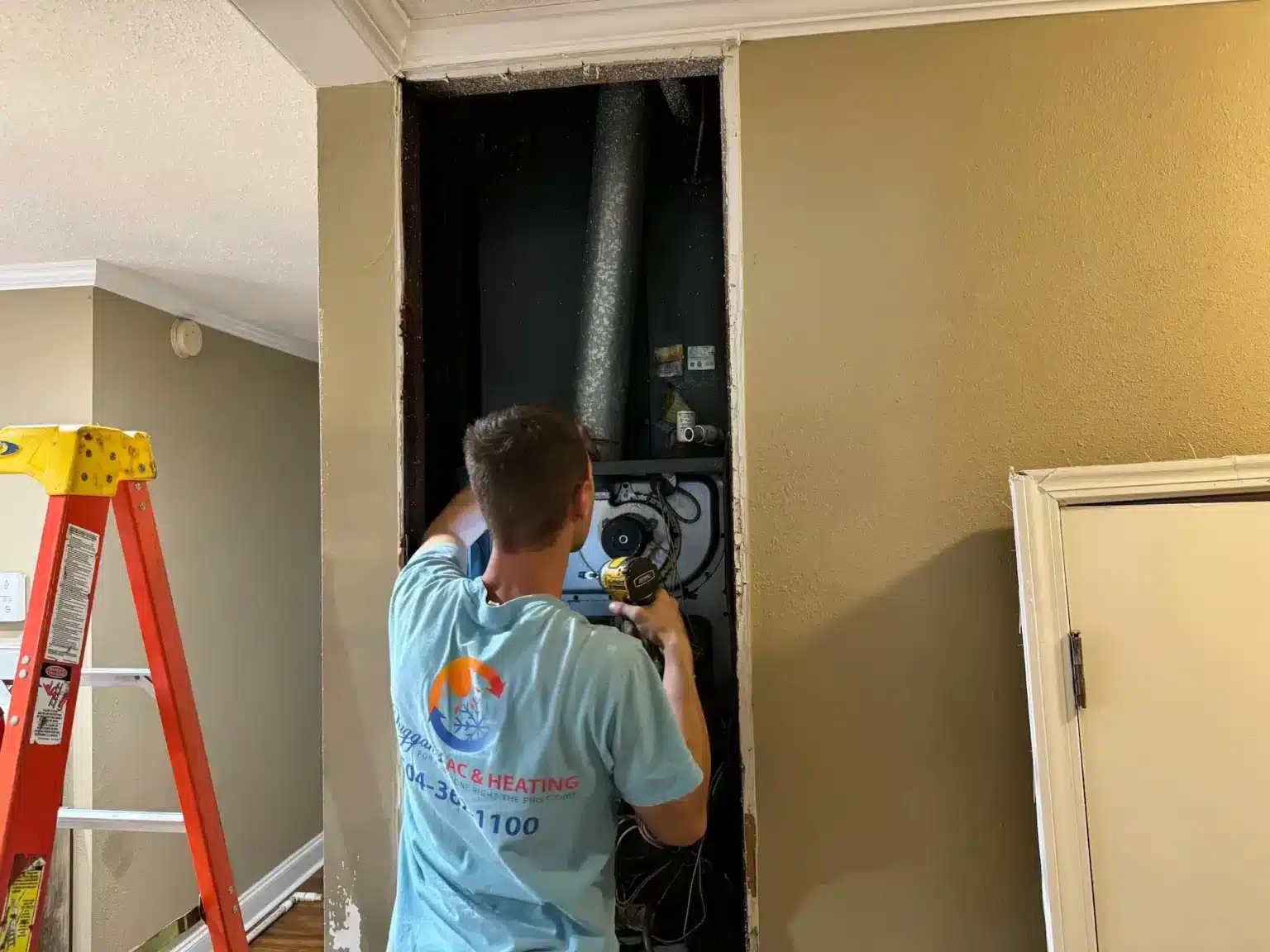Picture this: you’re coming home after a long day at work, and your house is already perfectly cooled to your favorite temperature. Meanwhile, your energy bills keep getting smaller each month. This isn’t some fantasy – it’s what happens when you upgrade to a smart thermostat.
Many homeowners wonder are smart thermostats worth it when they see the upfront costs. Let’s break down everything you need to know about these modern devices, so you can make the best choice for your home and wallet.
What Makes Smart Thermostats Different and Are Smart Thermostats Worth It for Your Home?
Smart thermostats aren’t just fancy-looking wall decorations. These devices connect to your home’s Wi-Fi network, giving you complete control over your heating and cooling system from anywhere. Unlike traditional thermostats that only respond to manual adjustments, smart models learn your habits and automatically adjust temperatures throughout the day.
Traditional thermostats work like simple switches – you set a temperature, and they maintain it. Smart thermostats, on the other hand, act more like personal assistants for your HVAC system. They track when you leave for work, notice when you come home, and even adjust settings based on the weather outside.
Most smart thermostats come with smartphone apps that let you control your home’s temperature from your office, vacation spot, or even the grocery store. Some models also work with voice assistants like Alexa or Google Home, so you can adjust temperatures without lifting a finger.
The real magic happens behind the scenes. These devices collect data about your daily routines and preferences, then use that information to create custom heating and cooling schedules. Over time, they get better at predicting what temperature you’ll want and when you’ll want it.
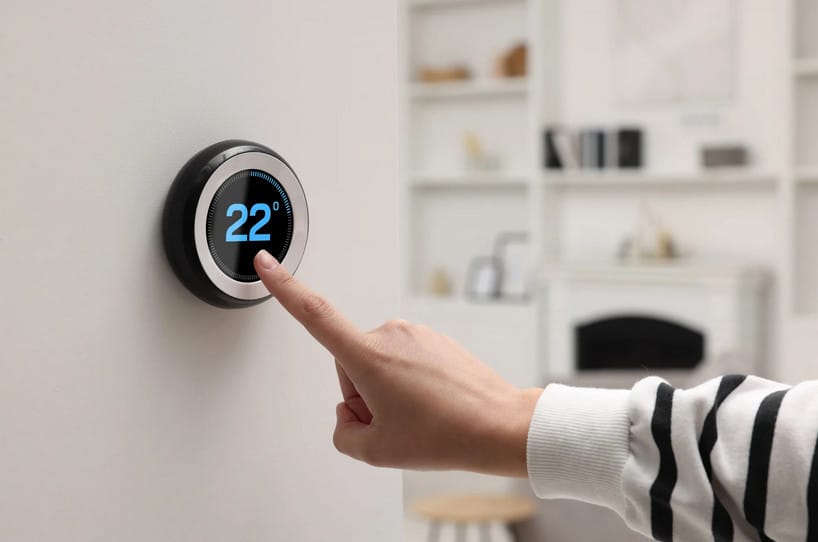
How Much Money Can You Actually Save When Smart Thermostats Are Worth It?
Here’s where things get interesting. The average homeowner spends about $2,000 per year on energy bills, with heating and cooling making up roughly half of that cost. Smart thermostats can reduce these costs by 10-15% annually, which translates to real money back in your pocket.
Let’s do some quick math. If you’re spending $1,000 yearly on heating and cooling, a 12% reduction saves you $120 every year. Most quality smart thermostats cost between $150-$300, meaning they pay for themselves within 2-3 years through energy savings alone.
The savings come from several sources. Smart thermostats automatically adjust temperatures when nobody’s home, preventing your system from working overtime to cool or heat empty rooms. They also optimize your HVAC system’s runtime, reducing unnecessary cycling that wastes energy.
Some utility companies offer rebates for installing smart thermostats, which can reduce your upfront costs significantly. Check with your local energy provider to see what incentives are available in your area. These rebates sometimes cover 50% or more of the device cost.
When you factor in the long-term savings, improved comfort, and potential rebates, smart thermostats are worth it for most homeowners. The key is choosing the right model for your specific system and getting it installed properly by professionals like our team at Duggan’s AC & Heating.
Understanding the Technology Behind Why Smart Thermostats Are Worth It
Smart thermostats use several technologies to deliver their impressive performance. Wi-Fi connectivity allows remote access and control, while built-in sensors monitor temperature, humidity, and even motion in some models. Many units also include learning algorithms that adapt to your preferences over time.
The sensors in smart thermostats are typically more accurate than those in traditional models. This precision means your home stays more comfortable while using less energy. Instead of temperature swings of 3-4 degrees, smart thermostats often maintain temperatures within 1-2 degrees of your target setting.
Geofencing technology is another game-changer. This feature uses your smartphone’s location to determine when you’re approaching home, automatically adjusting temperatures so your house is comfortable when you arrive. Similarly, it detects when you leave and switches to energy-saving mode.
Weather integration takes efficiency even further. Smart thermostats can access local weather forecasts and adjust their operation accordingly. On mild days, they might rely more on natural heating or cooling, reducing your system’s workload.
Some advanced models include humidity control features that work with compatible HVAC systems. By managing both temperature and moisture levels, these thermostats create more comfortable indoor environments while preventing issues like mold growth or dry air problems.
Installation Considerations That Make Smart Thermostats Worth It
Installing a smart thermostat isn’t always a simple DIY project. While some homeowners can handle basic installations, many situations require professional expertise. Your existing wiring, HVAC system type, and home’s electrical setup all affect the installation process.
Older homes with basic two-wire systems often need additional wiring to support smart thermostats. These devices typically require a “C-wire” (common wire) to provide continuous power for their Wi-Fi and display functions. Without proper wiring, even the best smart thermostat won’t work reliably.
HVAC system compatibility is another important factor. Heat pumps, multi-stage systems, and zoned HVAC setups require specific thermostat features and configuration. Installing the wrong type or setting it up incorrectly can damage your equipment or create comfort problems.
Professional installation ensures your smart thermostat works correctly from day one. Our technicians at Duggan’s AC & Heating test all connections, verify system compatibility, and configure settings for optimal performance. We also show you how to use your new thermostat’s features effectively.
Proper installation also preserves your HVAC system’s warranty and ensures safe operation. Incorrect wiring can cause electrical problems or damage expensive components. When you consider potential repair costs, professional installation becomes an smart investment rather than an unnecessary expense.
Comparing Different Smart Thermostat Models to Determine If Smart Thermostats Are Worth It
The smart thermostat market offers dozens of options, each with different features and price points. Entry-level models around $100-150 provide basic smartphone control and scheduling. Mid-range units ($150-250) add learning capabilities and energy reports. Premium models ($250-400) include advanced features like room sensors and voice control.
Popular brands include Nest, Ecobee, Honeywell, and Emerson. Each manufacturer focuses on different strengths. Nest thermostats are known for their learning algorithms and sleek design. Ecobee models often include room sensors for better temperature control. Honeywell offers reliable performance with professional-grade features.
Battery life varies significantly between models. Some units rely entirely on your HVAC system’s power, while others include backup batteries. Models with color displays and advanced features typically consume more power than simpler versions.
App quality makes a big difference in daily use. The best thermostat apps are intuitive and responsive, letting you adjust settings quickly. Poor apps can make even feature-rich thermostats frustrating to use. Reading reviews and testing apps before purchasing helps avoid disappointment.
Room sensors are becoming increasingly popular additions. These wireless devices monitor temperature in specific rooms, helping your smart thermostat maintain comfort throughout your home rather than just at the thermostat’s location. This feature is particularly valuable in larger homes or those with temperature variations between rooms.
Energy Efficiency Benefits That Prove Smart Thermostats Are Worth It
Smart thermostats excel at reducing energy waste through intelligent scheduling and optimization. Traditional programmable thermostats require manual programming and often get ignored or set incorrectly. Smart models handle scheduling automatically while adapting to your changing routines.
Adaptive recovery is one key efficiency feature. Instead of turning on your heating or cooling system at a set time, smart thermostats calculate when to start based on current conditions. This prevents overshooting target temperatures and reduces energy consumption.
Many smart thermostats provide detailed energy reports showing exactly how much heating and cooling you’re using. These insights help identify patterns and opportunities for additional savings. Some models even suggest schedule adjustments based on your usage patterns.
Integration with utility demand response programs can provide additional savings. During peak energy usage periods, participating thermostats automatically adjust temperatures slightly to reduce grid demand. Homeowners often receive credits or reduced rates for participating in these programs.
Smart thermostats also help identify HVAC system problems early. Unusual energy usage patterns or frequent cycling can indicate maintenance needs or equipment issues. Catching problems early prevents major breakdowns and expensive repairs, making the thermostat investment even more worthwhile.
Smart Home Integration and Why Smart Thermostats Are Worth It for Modern Living
Today’s smart thermostats integrate seamlessly with other smart home devices, creating coordinated systems that work together. Voice assistants like Alexa, Google Assistant, and Siri can control your thermostat through simple voice commands. This integration makes daily temperature adjustments effortless.
Smart thermostats can also work with other home automation systems. When your security system detects that everyone has left home, it can signal your thermostat to switch to away mode. Similarly, smart blinds, lights, and fans can work together to maintain comfortable temperatures efficiently.
Some advanced setups include occupancy sensors throughout the home. These systems track which rooms are being used and adjust heating and cooling accordingly. This room-by-room control maximizes comfort while minimizing energy waste in unused areas.
Smart water heaters, air purifiers, and humidifiers can also integrate with modern thermostats. This coordination ensures optimal indoor air quality and comfort while preventing conflicts between different systems. For example, your thermostat might reduce cooling when your air purifier detects high humidity levels.
The convenience factor alone makes smart thermostats worth it for many homeowners. Being able to adjust temperatures remotely, set up custom schedules, and receive maintenance alerts simplifies home management significantly. These benefits become more valuable as smart home technology continues advancing.
Common Problems and Solutions That Show Smart Thermostats Are Worth It
Like any technology, smart thermostats can experience occasional issues. Wi-Fi connectivity problems are among the most common complaints. These usually stem from weak wireless signals, router issues, or network configuration problems. Ensuring strong Wi-Fi coverage at your thermostat’s location prevents most connectivity issues.
Battery drain affects some models more than others. Thermostats with large color displays and constant Wi-Fi connections consume more power than simpler units. If your smart thermostat frequently loses power, check for proper C-wire installation or consider models with better power management.
Compatibility issues sometimes arise with older HVAC systems. Some smart thermostats can’t control certain types of heating and cooling equipment properly. Professional assessment before purchase prevents compatibility problems and ensures optimal performance.
Software updates occasionally cause temporary glitches or change user interfaces. Most manufacturers release regular updates to improve performance and add features. While updates sometimes create short-term confusion, they typically improve long-term reliability and functionality.
Temperature accuracy problems usually indicate sensor issues or poor thermostat placement. Direct sunlight, drafts, or nearby heat sources can affect readings. Professional installation includes proper placement to ensure accurate temperature sensing and optimal system performance.
Environmental Impact: Another Reason Smart Thermostats Are Worth It
Beyond personal savings, smart thermostats contribute to broader environmental benefits. By reducing energy consumption, these devices help decrease demand for electricity generation, which often relies on fossil fuels. Even modest reductions in individual home energy use add up to significant environmental benefits across communities.
The average smart thermostat reduces a home’s carbon footprint by 1,000-2,000 pounds of CO2 annually. This reduction equals the environmental benefit of planting 25-50 trees or taking a car off the road for several thousand miles. For environmentally conscious homeowners, these benefits make smart thermostats worth it beyond financial considerations.
Smart thermostats also help reduce peak energy demand during extreme weather periods. This demand reduction decreases the need for additional power plants and reduces strain on electrical grids. Some utility companies specifically promote smart thermostats as part of their conservation efforts.
Energy efficiency improvements extend HVAC system lifespan by reducing unnecessary runtime and cycling. This longevity means fewer units end up in landfills and reduces the environmental impact of manufacturing replacement equipment. Proper system maintenance guided by smart thermostat data further extends equipment life.
Many smart thermostat manufacturers prioritize sustainable materials and manufacturing processes. Some companies offer recycling programs for old thermostats and use recycled materials in new products. These initiatives add to the overall environmental benefits of upgrading to smart climate control.
Professional Installation Services That Make Smart Thermostats Are Worth It
While some smart thermostats come with DIY installation instructions, professional installation offers significant advantages. Our certified technicians at Duggan’s AC & Heating have the expertise to handle any installation challenges that arise. We ensure your new thermostat integrates perfectly with your existing HVAC system.
Professional installation includes comprehensive system testing to verify proper operation. We check all wiring connections, test heating and cooling cycles, and configure settings for optimal performance. This thorough process prevents problems that could arise from improper installation.
Our team also provides complete training on your new thermostat’s features. We show you how to use the smartphone app, set up schedules, and interpret energy reports. This education helps you get maximum value from your investment right from the start.
Installation warranties protect your investment and provide peace of mind. When professionals install your smart thermostat, you’re covered if any installation-related issues arise. DIY installations typically void manufacturer warranties and leave you responsible for any problems.
For homes in New Orleans, Metairie, Belle Chasse, and Gretna, our local expertise ensures installations meet regional codes and requirements. We understand the unique challenges of Louisiana’s climate and can recommend the best thermostat models for local conditions.
Maintenance and Long-term Care for Smart Thermostats
Smart thermostats require minimal maintenance compared to traditional models, but some care ensures optimal performance. Regular software updates keep your device running smoothly and add new features. Most updates happen automatically, but checking periodically ensures you haven’t missed important improvements.
Cleaning your thermostat’s display and sensors helps maintain accuracy and appearance. Use a soft, dry cloth to remove dust and fingerprints. Avoid harsh chemicals or excessive moisture that could damage electronic components. Clean surroundings also improve air circulation around sensors.
Battery replacement applies to some models, particularly those without C-wire power connections. Low battery warnings typically appear well before power loss occurs. Replacing batteries promptly prevents loss of settings and ensures continuous operation.
Regular HVAC system maintenance becomes even more important with smart thermostats. These devices can detect system problems early, but they can’t fix mechanical issues. Our AC maintenance and heater maintenance services keep your equipment running efficiently.
Wi-Fi network changes require thermostat updates to maintain connectivity. If you change internet providers or router passwords, you’ll need to update your thermostat’s network settings. Most models make this process simple through their smartphone apps.
FAQ: Common Questions About Smart Thermostats
Q: How much can I expect to save with a smart thermostat? A: Most homeowners save 10-15% on heating and cooling costs, typically $100-200 annually. Actual savings depend on your current usage patterns, local energy rates, and how well you utilize the thermostat’s features.
Q: Will a smart thermostat work with my old HVAC system? A: Most smart thermostats work with conventional heating and cooling systems. However, older systems may need additional wiring or compatibility accessories. Our technicians can assess your system and recommend appropriate options.
Q: Do smart thermostats require professional installation? A: While some models offer DIY installation, professional installation ensures proper wiring, system compatibility, and optimal performance. Incorrect installation can damage equipment or create safety hazards.
Q: How often do smart thermostats need software updates? A: Most smart thermostats update automatically when connected to Wi-Fi. Updates typically occur monthly or quarterly, though major feature updates may happen less frequently.
Q: Can smart thermostats control humidity levels? A: Some smart thermostats can control humidity when connected to compatible HVAC equipment. This feature requires specific system capabilities and proper installation.
Q: What happens if my Wi-Fi goes down? A: Smart thermostats continue basic heating and cooling functions without Wi-Fi. You lose remote access and some advanced features, but your system continues operating with preset schedules.
Q: Are smart thermostats difficult to use? A: Modern smart thermostats are designed for easy use. Most people find smartphone apps intuitive, and voice control makes adjustments even simpler. Professional setup and training help ensure smooth operation.
Q: How long do smart thermostats typically last? A: Quality smart thermostats usually last 8-12 years with proper care. This lifespan is similar to traditional thermostats, though software support may end sooner than hardware failure.
Q: Can I install multiple smart thermostats in my home? A: Homes with multiple HVAC zones can use multiple smart thermostats. Each zone requires its own thermostat and compatible equipment. Some brands offer multi-zone management through single apps.
Q: Do smart thermostats work during power outages? A: Smart thermostats stop working during power outages, just like traditional models. Some have backup batteries that preserve settings, but they can’t operate HVAC equipment without power.
Final Thoughts: Are Smart Thermostats Worth It for Your Home?
The bottom line is clear: smart thermostats are worth it for most homeowners who want to save money, improve comfort, and reduce environmental impact. The combination of energy savings, convenience features, and long-term benefits typically outweigh the initial investment within 2-3 years.
The key to success lies in choosing the right model for your specific needs and ensuring proper installation. Professional assessment and installation maximize your investment returns while preventing compatibility issues or performance problems.
At Duggan’s AC & Heating, we specialize in smart thermostat installation and can help you select the perfect model for your home. Whether you need AC installation, AC repair, or want to upgrade to smart climate control, our experienced team is ready to help.
Smart thermostats represent the future of home climate control, offering benefits that extend far beyond simple temperature adjustment. The technology continues improving while prices remain reasonable, making now an excellent time to upgrade your home’s comfort and efficiency.
Ready to discover if smart thermostats are worth it for your specific situation? Contact our team at (504) 224-8875 or visit our contact page to schedule a consultation. We’ll assess your current system, discuss your needs, and recommend the best smart thermostat solution for your home and budget.

